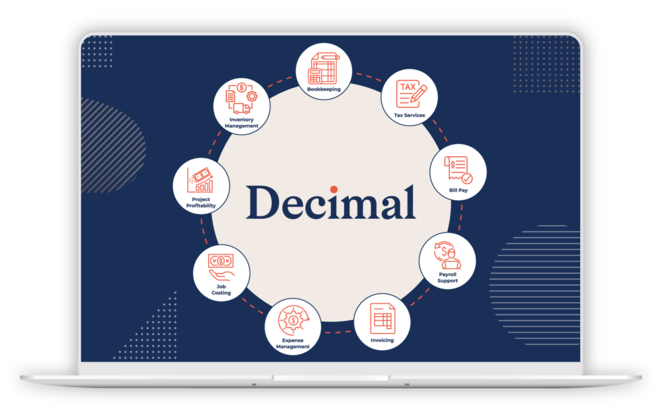We’ve been having the same conversations about pricing for over a decade now, ever since Ron Baker released his revolutionary book, Value Pricing: A Radical Business Model for Professional Firms in December 2010. Yet, many firms still default to outdated models, either charging by the hour, or offering fixed fee billing without fully considering how pricing impacts profitability, client satisfaction and growth.
As firms face increased competition from technology and PE companies, evolving client expectations, and the commoditization of compliance work — rethinking pricing strategies for accounting firms has become more important than ever.
The evolution of pricing in accounting
Historically, firms have relied on hourly billing or flat fees. These methods are preferred because they provide structure and fit well into a repeatable formula, but they often miss the mark because:
- Hourly billing punishes efficiency. The faster and better you serve a client, the less you earn.
- Flat fees simplify billing but can still commoditize services, reducing pricing to a transaction rather than an outcome.
In today’s environment, these models also make it difficult to remain competitive. Small business owners are increasingly researching the average price for accounting services and the average price for bookkeeping services before engaging a firm. Competing only on these benchmarks risks underpricing expertise.
By contrast, value pricing rewards effectiveness. This approach aligns fees with measurable outcomes and transformation delivered to clients, allowing firms to capture revenue that reflects the true impact of their work.
From service work to knowledge work
Technology and automation continue to streamline compliance tasks. As a result, accountants are shifting away from transactional service work and toward knowledge work—helping clients interpret financial data, make informed decisions, and achieve long-term goals.
This shift reinforces the need for new pricing strategies. Clients are not just buying tax returns or financial statements. They are paying for knowledge, insight, and outcomes. Firms that continue to price based on time or deliverables risk undervaluing their role as advisors.
Competitive pricing for accountants in a value-focused model
In an increasingly crowded marketplace, firms often ask: How can we remain competitive without racing to the bottom?
The answer lies in competitive pricing for accountants that emphasizes differentiation. Instead of comparing rates to the firm down the street, accountants should highlight unique expertise, niche focus, or the strategic outcomes they deliver.
For example, a firm specializing in e-commerce may price services not by the number of hours worked but by the revenue growth and financial clarity clients gain through advisory services. This reframes the client’s perception of value and makes direct price comparisons less relevant.
Principles of a value-focused practice model
A value-focused pricing strategy rests on three core principles:
- Understand what clients are truly buying. Clients are not purchasing hours, reports, or effort. They are investing in outcomes—confidence, clarity, and financial insights that move their business forward.
- Define your product. Just as Disney sells “magic” and Jeep sells “freedom,” firms must define their unique value proposition beyond compliance deliverables.
- Align pricing with results. Instead of recovering costs, firms should set prices based on the measurable return on investment they provide.
Is a bookkeeping business profitable?
One of the most common questions firm owners and entrepreneurs ask is: Is a bookkeeping business profitable?
The answer depends largely on pricing strategy. Firms that compete solely on the average price for bookkeeping services often find margins squeezed by low-cost competitors and offshore providers. However, when bookkeeping is positioned as part of a value-focused advisory model, profitability increases significantly.
By bundling bookkeeping with advisory services—cash flow forecasting, financial analysis, and business planning—firms create opportunities for higher-value engagements and recurring revenue. In this context, a bookkeeping business can absolutely be profitable, provided services are priced strategically and aligned with client outcomes.
Building a stronger client portfolio
Not every client is the right fit for value-based pricing. Value-sensitive clients—those who prioritize outcomes over low-cost services—are more willing to invest in advisory work and less likely to focus only on the average price for bookkeeping services.
To elevate their portfolios, firms can:
- Evaluate clients against profitability and growth potential.
- Use pricing adjustments to encourage non-ideal clients to self-select out.
- Target industries where advisory services have high impact, such as distribution, construction, and e-commerce.
This strategy ensures pricing reflects the value delivered while fostering stronger, longer-lasting client relationships.
The hidden cost of “gravy clients”
In coaching conversations with firm leaders, I often hear stories about how pricing models evolve over time. One client recently described how, after reaching a certain number of tax clients, every additional engagement felt like “gravy”—pure profit on top of existing operations. Because of this mindset, they began accepting non-ideal clients at lower price points.
At first, this seemed like a win. The infrastructure was already in place, so each new client appeared to add incremental profit. But over time, the problems became clear. These clients were paying fees that were too low and, more importantly, they didn’t fully value the services they were receiving.
Instead of boosting profitability, these engagements drained capacity, distracted the team from high-value clients, and ultimately eroded margins. The firm found itself “stuck” with clients who were difficult to offboard and resistant to price increases.
This story illustrates a common trap: short-term revenue gains that undermine long-term pricing strategy. Value-focused firms must be selective about which clients they serve, ensuring that every engagement supports—not undermines—the firm’s positioning and profitability goals.
Protecting your pricing model
Even the best pricing model can erode without discipline. Firms should:
- Separate assessment, cleanup, and ongoing work into distinct engagements.
- Issue change orders for scope creep.
- Reprice annually to reflect both rising costs and increasing client value.
These steps protect profitability and reinforce a culture of pricing based on value, not time.
Moving forward
The shift from hourly billing or flat fees to value-based pricing requires mindset and operational change, but the payoff is significant: stronger margins, more engaged clients, and a sustainable growth model.
Firms that embrace modern pricing strategies for accounting firms will not only differentiate themselves in a competitive marketplace but also redefine what it means to provide true advisory services.
For professionals ready to design a value-focused model, Joe Woodard will lead a dedicated workshop, Building a Pricing Model, in October 2025. The workshop will explore the frameworks and tools firms need to build pricing strategies that reflect both their expertise and the transformative results they deliver. Learn more and register here.
This article was written with the help of ChatGPT based on original content. It was reviewed and edited by humans.
.png?width=150&height=63&name=TWRlogo-regmark_blueblack%20(1).png)
.png)










Do you have questions about this article? Email us and let us know > info@woodard.com
Comments: